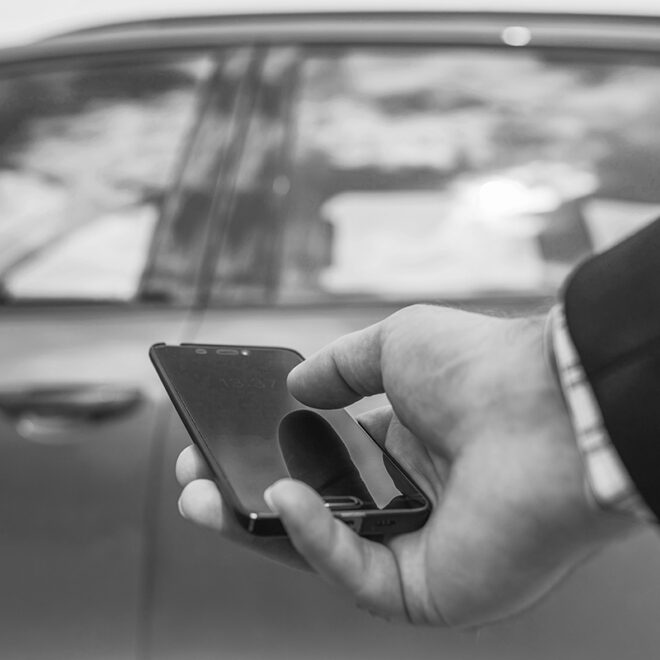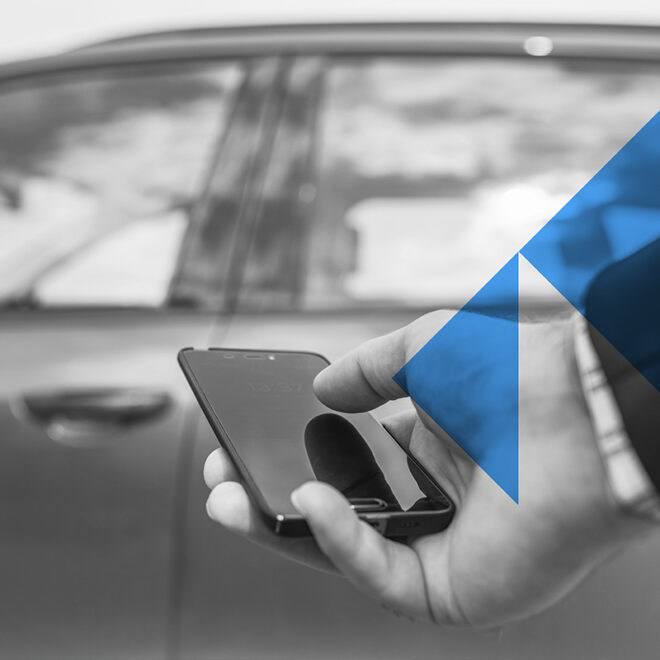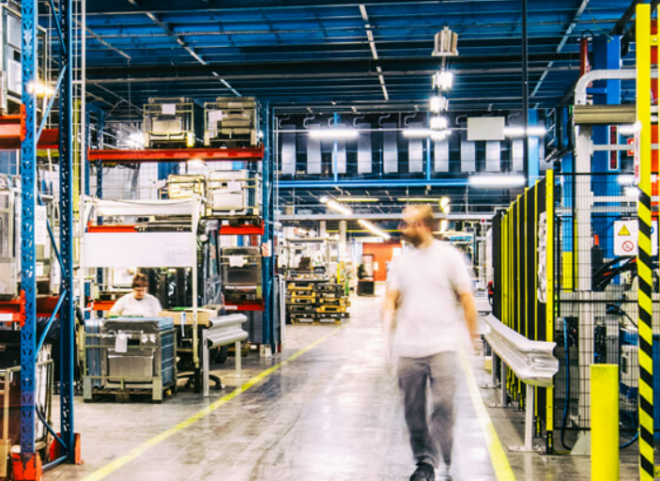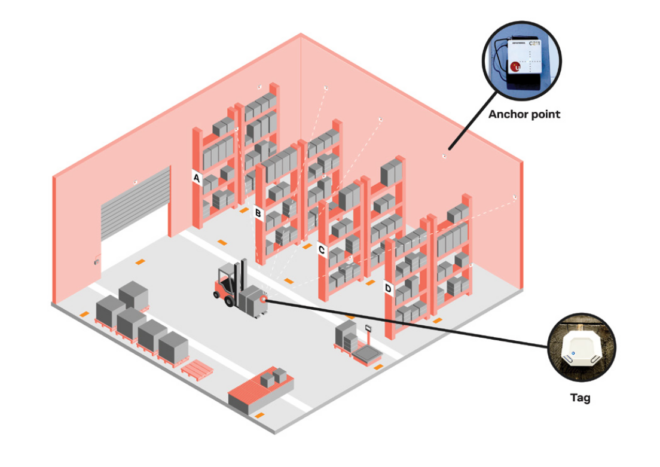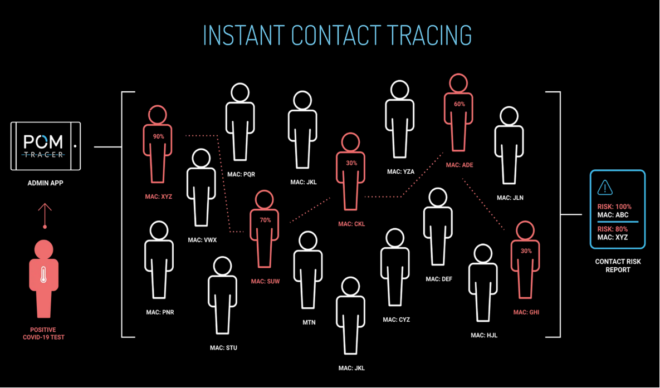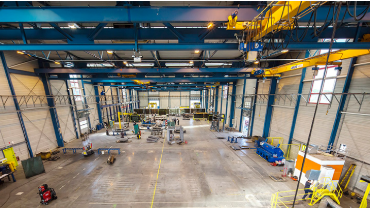First introduced in 2010, Bluetooth® Low Energy (LE) gave developers all over the world new opportunities for data transmission innovation. Supporting multiple communication topologies and enabling devices to determine the presence, distance, and, soon, direction of other devices, Bluetooth LE is the natural choice for developers like TOKAI RIKA as they create new access control solutions.
I recently spoke with the team at TOKAI RIKA about how they use Bluetooth LE to meet the ever-growing demand for secure, convenient digital key solutions for vehicles.
Q&A With the TOKAI RIKA Team
Why did you choose Bluetooth technology for your TOKAI RIKA Digitalkey® solution?
We have been involved in the development of digital key solutions for over ten years, starting with the creation of technologies and systems that use mobile terminals as vehicle keys. In the process, we faced two major obstacles in practical application: the high power consumption of in-vehicle equipment and long connection times between in-vehicle equipment and mobile terminals. Bluetooth® Classic and Wi-Fi systems available at the time were not created to meet the required levels because vehicle electronic key systems require a high degree of convenience, such as immediate operation times and low power consumption – a must for our digital key solutions. Bluetooth LE was the solution to these problems.
From first development to present day, we have long been aware that Bluetooth technology is the only wireless communication standard that satisfies our high expectations for power consumption requirements, functionality, performance, and security. We are also interested in the advancements Bluetooth technology is making to its positioning capabilities, including the AoA/AoD positioning feature recently introduced as well as the upcoming high accuracy distance measurement feature that is currently in development. We are also considering the potential of a Bluetooth + UWB solution for use cases and applications that may require more refined location identification.
“Bluetooth® technology will continue to be an indispensable solution for not only digital key services but also for wireless communication devices installed in connected cars.”
![]()
ON-DEMAND WEBINAR
The Myths & Facts about Bluetooth® Technology as a Positioning Radio
Watch this detailed discussion into the challenges and opportunities in front of indoor location services systems and how to tap into their potential in manufacturing, logistics, retail, offices, and more.
Can you provide an example of a successful application for this solution?
Our smart device FREEKEY Box for cars and our FREEKEY Company Car Reservation service, launched in April of this year, are currently being used by several organizations.
The FREEKEY Box stores a car’s physical key inside a box that enables the user to lock and unlock the car door via their smartphone.
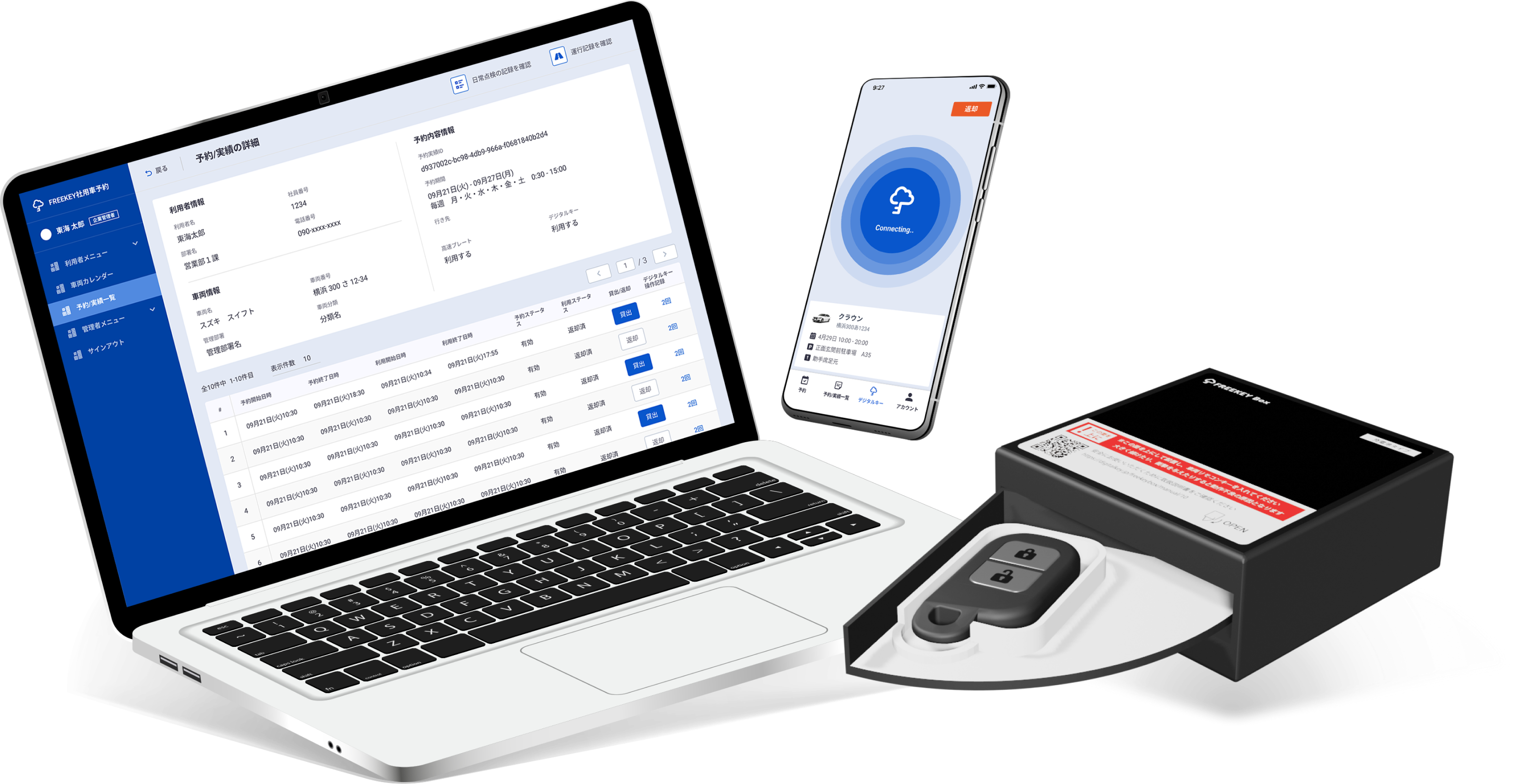
Since the car keys can be handed over without any in-person interactions, the system is ideal for car sharing between individuals and the sharing of company cars between multiple drivers. Our digital key system is designed for a variety of scenarios and can be used in places where radio waves from a base station cannot reach, such as indoor or underground parking lots. Bluetooth LE has made a significant contribution to the realization of this mechanism, despite difficult challenges, guaranteeing security and maintaining connectivity, operability, and convenience.
FREEKEY Box can be used in a variety of B2C and C2C applications because it does not require a direct connection to the vehicle or face-to-face handover of a physical key, allowing users to lend or borrow shared vehicles at locations of their choosing. Conventional car sharing systems require the development of equipment for each car manufacturer and each car model, making it difficult to support services with multiple car models.
The service does not require IC cards or any device other than a smartphone, which means flexible service development and operation, convenience for overseas travelers and easy-to-follow procedures.
What are the advantages of using smartphones for digital key solutions?
We intend to digitize the various keys used in daily life and promote the use of digital keys for other mobilities, parking lots, offices, and other buildings with the aim of realizing a secure, convenient, user-friendly solution.
Smartphones will have a leading role in various Mobility as a Service (MaaS) and IoT/IT services for some time to come and will be essential devices in the ever-expanding market of digital key solutions. We intend to continue focusing on the development of new solutions that utilize the next-generation standards of Bluetooth® technology, the 5G/6G evolution, Wi-Fi, and more.
What role do you see Bluetooth technology playing in the future of digital key and automotive technology?
With its high degree of conformity to the technical requirements of devices for MaaS/IoT services and 100 percent installation rate in smartphones, which play a leading role in these services, Bluetooth® technology will continue to be an indispensable solution for not only digital key services but also for wireless communication devices installed in connected cars.
![]()
FEATURED INFOGRAPHIC
Bluetooth® Location Services Infographic
See 8 use cases for enhancing building efficiencies and creating a better visitor experience, discover new data that supports the latest trends and forecasts, and find out what’s driving the rapid adoption of location services solutions.
Bluetooth® Low Energy(LE)は2010年に登場して以来、世界中の開発者にデータ通信のイノベーションをもたらす新たな機会を提供しました。新しいアクセスコントロールソリューションを生み出すTOKAI RIKAの開発者にとっても、複数の通信位相をサポートし、機器が他の機器の存在や距離、方向を把握することを可能にするBluetooth LEを選択したのは自然なことでした。
TOKAI RIKAのチームに、セキュアで利便性の高い自動車用デジタルキーソリューションの高まる需要に対しBluetooth LEをどのように用いて応えているのか、お話を伺いました。
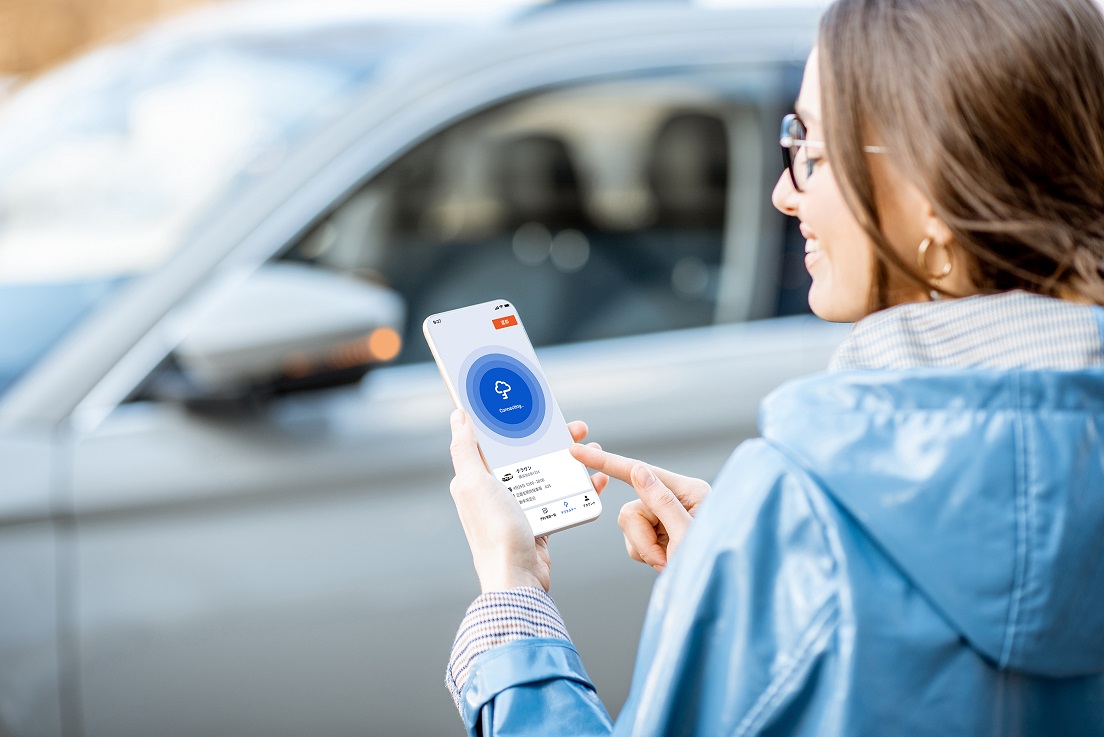
TOKAI RIKAチームとのQ&A
1.Bluetooth技術を貴社のTOKAI RIKA Digitalkey®ソリューションに採用した理由についてお聞かせください。
〇回答:
当社は、2004年に携帯電話をお財布にするサービスが開始されたことをきっかけに、モバイル端末を車両キーとして活用するための技術開発やシステム開発を開始し、10年以上デジタルキーソリューションの開発を手掛けてきました。その中で、実用化に向け大きな壁になったのが、車載器の消費電力の大きさと、車載器―モバイル端末間の接続時間の長さです。
車両電子キーシステムには、操作待ち時間が短いなどの高い利便性と低消費電力が求められるため、従来のBluetooth(2.0/3.0)やWi-Fiでは要求レベルを満足できていませんでした。そこに登場したのが、Bluetooth4.0で採用された、LE(Low Energy)です。
Bluetooth LEを用いることで、これらの課題を解決できる目途がたったため、Bluetooth技術を採用しました。
当社のデジタルキーソリューション用IoTデバイスには、前述したように低消費電力であることが求められます。開発当時より現在に至るまで、消費電力要件、機能・性能、セキュリティ性等の要件を満たす標準無線通信規格は、Bluetoothしかない認識です。また、Ver5.1から実装されたAoA/AoD機能を用いた測位技術については、UWB技術と共に注目しており、今後位置特定が必要なソリューションへの適用について検討したいと考えています。
2.このソリューションを適用されて成功した事例があれば教えてください。(実証例、導入への取り組みなど)
〇回答:
現在、当社の車向けスマートデバイス「FREEKEY Box」および今年の4月にサービスを開始した「FREEKEY 社用車予約」サービスにつきまして、弊社デジタルキーウェブサイト(https://digitalkey.jp/casestudy)でご紹介しております事例をはじめ、複数の事業者様でご採用していただいている他、他事業者様との実証実験での導入もさせて頂いております。
FREEKEY Boxは車の物理鍵を筐体内に格納することで、スマートフォンを用いた車のドアの施錠・解錠が可能となります。また非対面で車の鍵の受け渡しができるため、個人間カーシェアや、複数人で1台の社用車を共有する場面で利便性を実感していただけます。
当社のデジタルキーシステムは、様々な利用シーンを想定し、屋内駐車場や地下駐車場など、基地局からの電波が届かない場所でも利用できる仕組みになっています。
Bluetooth LEは、この仕組みを実現する上で、セキュリティ性の担保と接続性/操作性/利便性を維持するという困難な課題をクリアするために大きく貢献してくれたと考えています。
FREEKEYシステムは、デバイス側に予約情報等を事前に送信しなくても良い仕組みとなっており、FREEEY Boxにモバイル回線接続機能は不要です。これにより、回線使用料分のコスト低減が可能となり、車両からの待機電力供給も不要です。
また、車両側での回線接続が不要なこと、かつ車両キーの対面受け渡しが不要であることから、シェアカーの借りる場所/返す場所を自由に設定できますので、B2C、C2Cを問わず、
様々なユースケースに対応できます。
さらに、従来のカーシェアシステムでは、車両メーカーごとおよび車種ごとの機器開発が必要で、多車種サービスへの対応が困難でしたが、FREEKEY Boxでは発注時に使用車種をご指定頂くだけで対応が可能です。(※非対応車を除きます)
加えてICカードなどの専用アイテムが不要で、スマートフォンのみのサービス利用が可能ですので、外国人旅行者へのサービスや入会手続きの簡略化など、柔軟なサービス展開、運用が期待できます。
3.デジタルキーソリューションにおいて、スマートフォンを用いる優位性についてお聞かせください。
〇回答:
当社は、今後生活で利用する様々な鍵をデジタル化し、クルマ以外のモビリティ、オフィスなどの建物、駐車場などもデジタルキー化を促進させ、安全かつ便利な社会の実現を目指します。
スマートフォンはこの社会で重要な役割を担うキーデバイスであると考えており、今後もしばらくは様々なMaaS、IoT/ITサービスにおける主役の座を占め、デジタルキーソリューションを拡大する上で必要不可欠なアイテムであると考えています。5G evolution/6G、BluetoothやWi-Fiの次世代規格等、スマートフォンへの導入が予想される最新技術への対応、またそれらを活用した新たなソリューションの開発に向けて、今後も注力してまいります。
4.デジタルキー技術や自動車技術の将来において、Bluetooth技術はどのような役割を果たすとお考えでしょうか?
〇回答:
MaaS/IoTサービス用デバイスに求められる技術要件へ適合度が高く、サービスの主役となるスマートフォンへの搭載率が100%であるBluetoothは、デジタルキーサービスだけでなく、「コネクテッドカー」に搭載される無線通信機器には、なくてはならない技術になると考えています。








